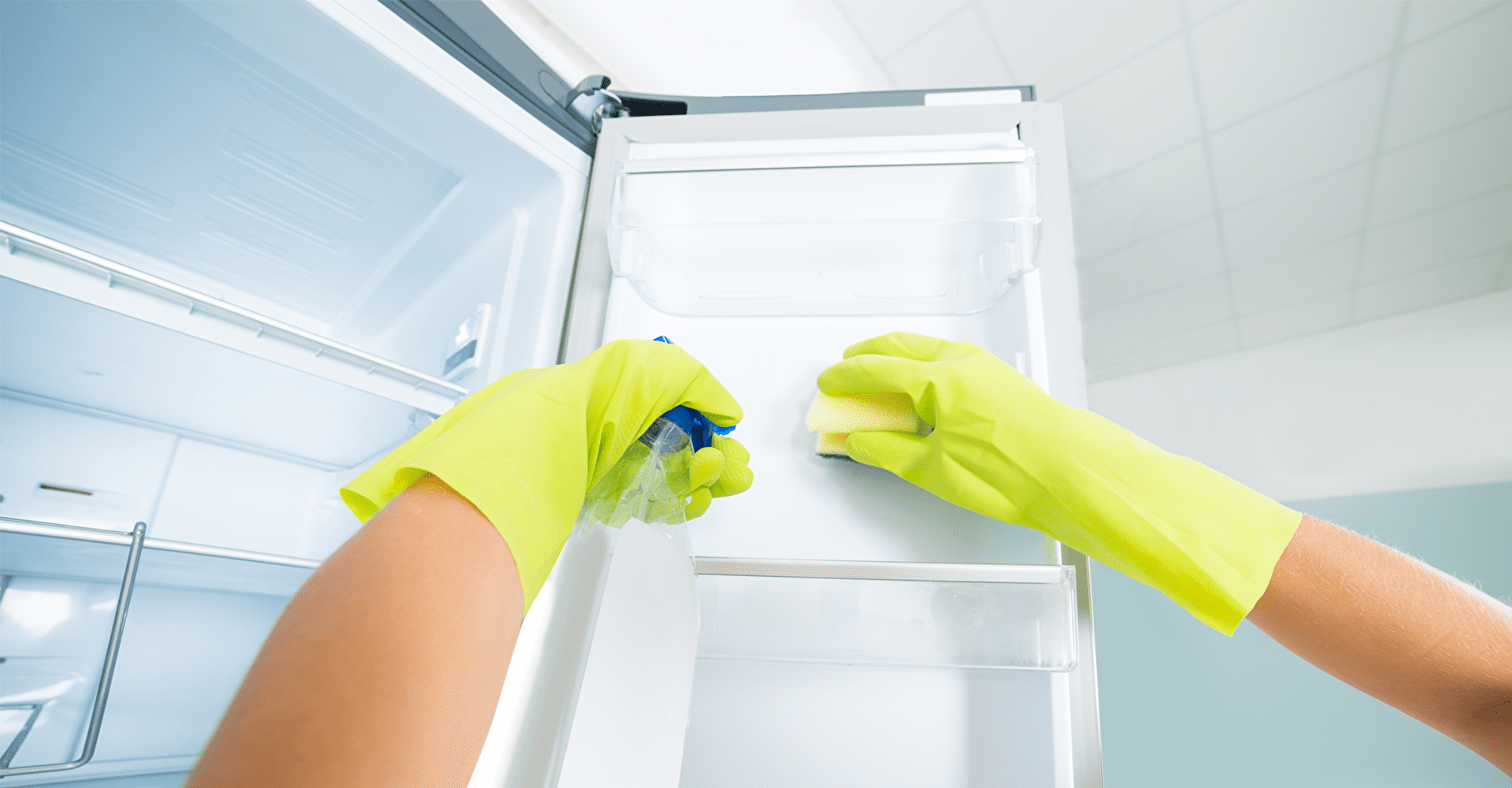
02 Jul
Your refrigerator is one of the most used appliances in your home, yet it’s often the most overlooked when it comes to routine cleaning. Between storing raw meats, leftovers, fruits, vegetables, sauces, and drinks, it can quickly become a breeding ground for odors, spills, and bacteria. A dirty refrigerator not only looks unappealing but can also compromise food safety and emit unpleasant odors that permeate your groceries. Learning how to clean your refrigerator properly ensures it stays sanitary, organized, and energy-efficient.
The best way to clean your refrigerator is to tackle it one section at a time, starting with a complete emptying of its contents. Before you begin, unplug the refrigerator or turn the thermostat to the “off” position for safety and energy conservation, especially if you anticipate the doors being open for a while. Next, remove all food items. Discard anything that’s expired, moldy, leaking, or has a strange odor. Group the remaining items in a cooler or insulated bag to keep them fresh while you clean.
Once everything is out, remove all detachable shelves, drawers, and bins. These components are easier to clean thoroughly when removed from the fridge. Wash them with warm water and mild dish soap, using a sponge or soft brush to scrub away sticky residues or dried-on spills. For tougher grime, let the pieces soak in a mixture of warm water and baking soda. Avoid using hot water directly on cold glass shelves, as it may cause the glass to crack. Let all parts dry completely before returning them to the refrigerator.
Now that the interior is empty and the components are out, it’s time to clean the inside of the refrigerator. Use a mixture of warm water and baking soda (about 1 tablespoon of baking soda to 1 quart of water) to wipe down all surfaces. Baking soda is gentle yet effective—it neutralizes odors and lifts grime without leaving behind any harsh chemical residue. Use a clean cloth or sponge to scrub the walls, floor, ceiling, and door seals of the fridge, paying close attention to corners, cracks, and crevices where crumbs and spills tend to accumulate.
If you encounter stubborn stains, a paste of baking soda and water can be applied directly to the spot and left for 10–15 minutes before scrubbing. For greasy or sticky messes—especially those caused by leaking sauces or sugary drinks—a small amount of white vinegar can help break down the residue. Just make sure to rinse with plain water afterward to avoid any lingering smell or taste in your fridge.
Don’t forget to clean the rubber door seals (gaskets). These are essential for keeping the cold air inside and ensuring your refrigerator runs efficiently. Use a soft toothbrush or a cloth dipped in the baking soda solution to gently clean along the folds. Mold, mildew, and crumbs often accumulate here, so take your time and ensure the seal is completely clean and dry before closing the door again.
While the inside of the refrigerator often receives the most attention, the exterior should be cleaned regularly as well. Use a damp cloth and mild soap to wipe down the doors, handles, and control panel. If you have a stainless steel fridge, use a specialized stainless steel cleaner or a mixture of vinegar and water to wipe in the direction of the grain and buff out any fingerprints or streaks. Always dry the surface with a microfiber cloth to avoid water spots.
To keep your refrigerator running efficiently and prolong its lifespan, clean the condenser coils at least twice a year. These coils are usually located at the back or bottom of the appliance and can accumulate dust and debris over time, forcing your fridge to work harder. Use a vacuum with a hose attachment or a coil cleaning brush to remove buildup gently. Be sure to unplug the refrigerator before doing this step for safety.
Once your fridge is clean and dry, return the shelves, bins, and drawers to their original positions. Before placing food back inside, consider lining the shelves with refrigerator-safe mats or paper towels to prevent spills. This makes future cleanings easier and catches spills before they become stubborn messes. Group similar items together and store them in clear containers to keep things organized. Label leftovers with dates to ensure they’re used promptly, and rotate older items to the front to minimize waste.
To keep your fridge smelling fresh between deep cleans, place an open box of baking soda on one of the shelves to absorb odors. You can also use activated charcoal, coffee grounds, or a small dish of dry oats for a natural deodorizing effect. Just remember to replace them every month or so. For a pleasant scent, add a few drops of lemon or vanilla extract to a cotton ball and tuck it in a discreet corner.
Regular maintenance is the key to a clean and efficient refrigerator. Wipe up spills as soon as they happen to prevent sticky messes from hardening. Do a quick inspection every week to remove expired or spoiled items and consolidate half-empty containers. Deep clean your refrigerator every three months, or more often if you frequently store perishable items or live in a humid climate.
Cleaning your refrigerator might seem like a daunting task, but it becomes much easier with a step-by-step approach. By taking the time to empty, wash, wipe, and organize, you not only improve the appliance’s hygiene and efficiency but also extend its lifespan. A clean refrigerator ensures your food stays safe, your kitchen smells fresh, and your daily routines remain stress-free. With regular upkeep and mindful storage habits, your fridge can be a source of freshness and function, not frustration.



